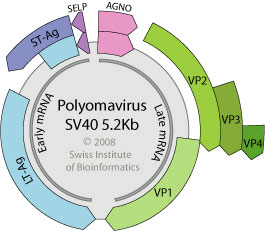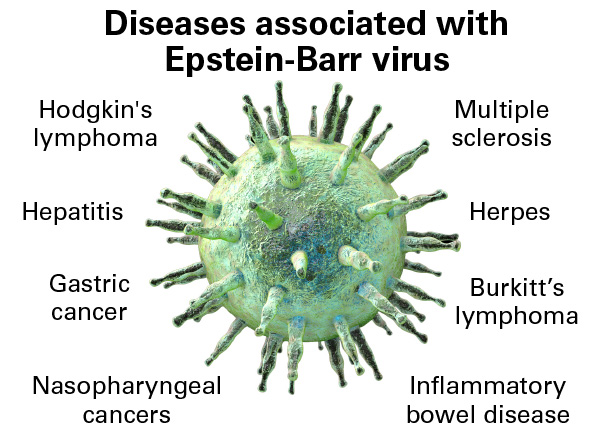ONCOGENIC VIRUSES
INTRODUCTION
- Oncogenic viruses cause cancer.
- The oncogenic viral DNA is always present in the tumor cells caused by the oncogenic virus.
- In some tumor cells, the virus DNA gets fused into the cell chromosome.
- In some cases, the virus DNA is also present as multiple copies of covalently closed DNA (cccDNA).
- The protein of oncogenic viruses can be detected in tumor cells.
- Some of the human adenoviruses are seen to be oncogenic.
- They are can transform cells in culture and cause tumors after inoculating into animals.
- Adenoviruses do not cause cancer in humans to date.
- About 20 percent of cancer cases in human females and about eight percent in males are seen to be caused by viruses
TYPES OF CANCER
Papillomavirus-linked cancers
- Most of the infections caused by papillomavirus can result in cervical carcinoma in women.
- It is a small DNA virus that infects mammals and birds.
- There is approximately 100 human papillomavirus (HPV) types.
- They are distinguished based on their DNA sequencing.
- This virus enters the body through small cuts.
- It infects keratinocytes present in the skin or a mucous membrane.
- Each type of this virus either infects the hands or the genitals.
- It results in a wart or carcinoma.
- Most of these infections do not become persistent.
- The one who gets a persistent infection has a small risk of cancer
- HPV 16 and 18 are the high-risk types of human papillomavirus(HPV).
- The host cells of this virus i.e. keratinocytes do not divide after differentiation.
- But when infected the virus induces keratinocyte into the S phase of the cell cycle.
- When a cell is infected with a high-risk HPV, its division continues unchecked.
- This eventually results in cancer.
- HPV can also cause a rare type of skin cancer.

Polyomavirus-linked cancers
- These are the same as papillomavirus.
- JC and BK viruses are two types of human polyomavirus known.
- These viruses may have some roles in some cases of the human brain tumor.

Epstein-Barr virus-linked cancers
- Anthony Epstein grew cell lines from the B cell tumor of a patient
- He observed that the cells were continuously infected with a herpesvirus.
- He named it Epstein Barr virus (EBV)
- Nasopharyngeal carcinoma (NPC) is another tumor that is associated with EBV.
- In both the tumors, the EBV genome is present as cccDNA.
- Other cancers that are associated with EBV include – some cases of Hodgkin’s lymphoma, non-Hodgkin’s lymphoma in AIDS, and post-transplant lymphoproliferative disorder.

HOW DO VIRUSES CAUSE CANCER
Interference in cell cycle
- A virus manipulates the internal environment of its host cell.
- Through this, it gets all the requirements for its replication.
- The control in the cell cycle is regulated by many proteins.
- p53 and retinoblastoma protein (pRb) are the two proteins in humans that mediate the cell cycle control.
- Oncogenic viruses produce several proteins that interact with these host proteins which results in repeated cycles of division.
- HPV early proteins E6 and E7 can interfere with control in the cell cycle.
- E6 binds to p53, which leads to its degradation and E7 binds to pRb–E2F complexes, resulting in their dissociation.
- The cell is then pushed to the S phase.
Activation of untargeted cell genes
- Some virus proteins interact with the cell proteins that may not be the intended targets.
- As a result, events that may be harmful to the host are triggered.
- A virus protein pushes a cell towards a cancerous state by activating a gene that is switched off.
Damaging the immune defense
- Interaction between host protein and protein produced by the oncogenic virus can damage the immune defenses.
- This can lead to the development of cancer.
